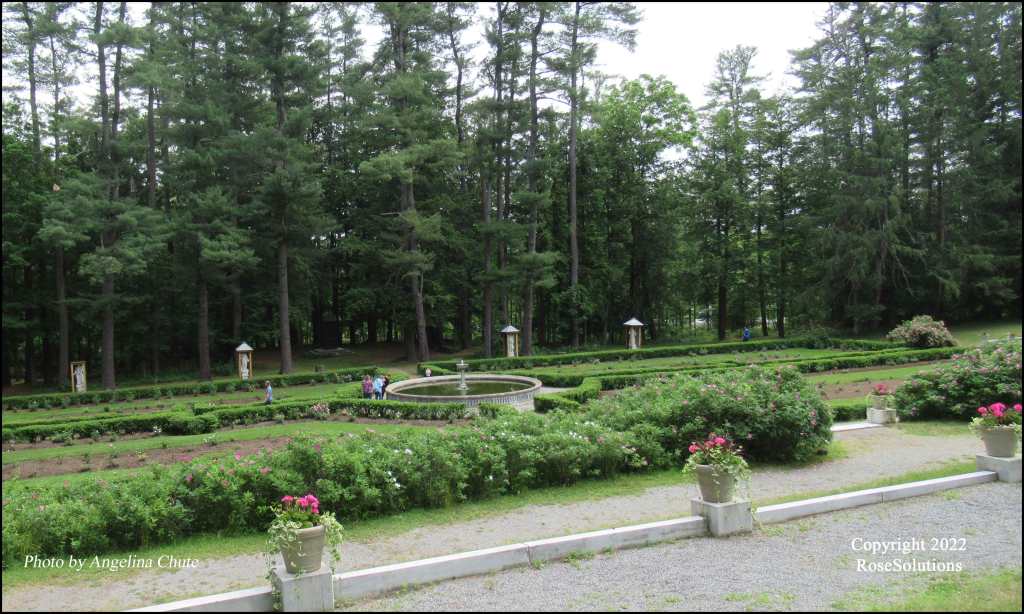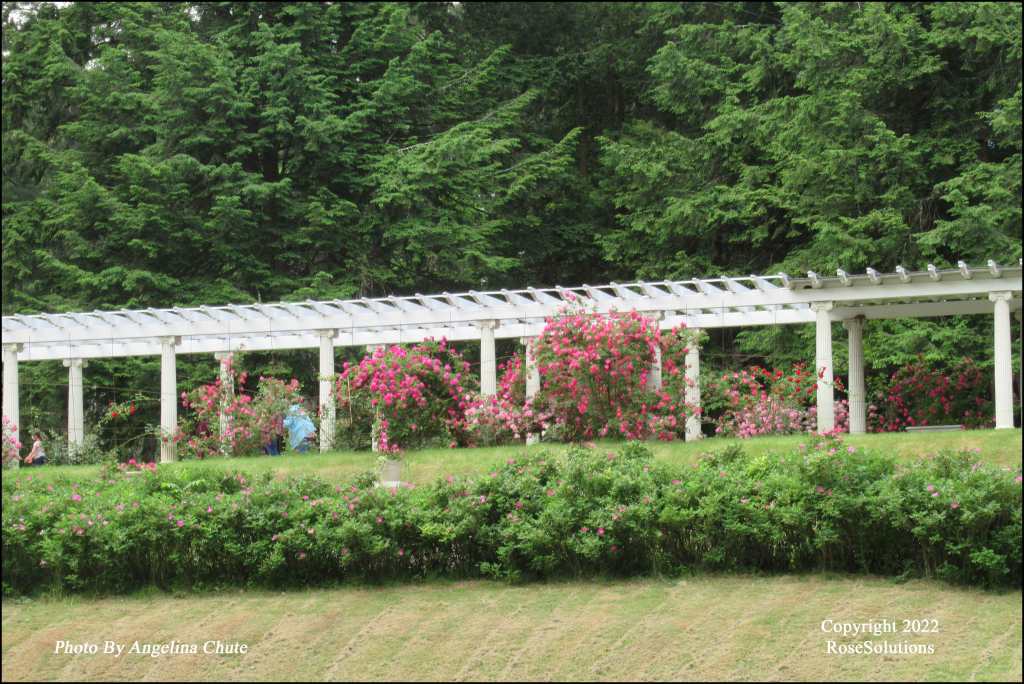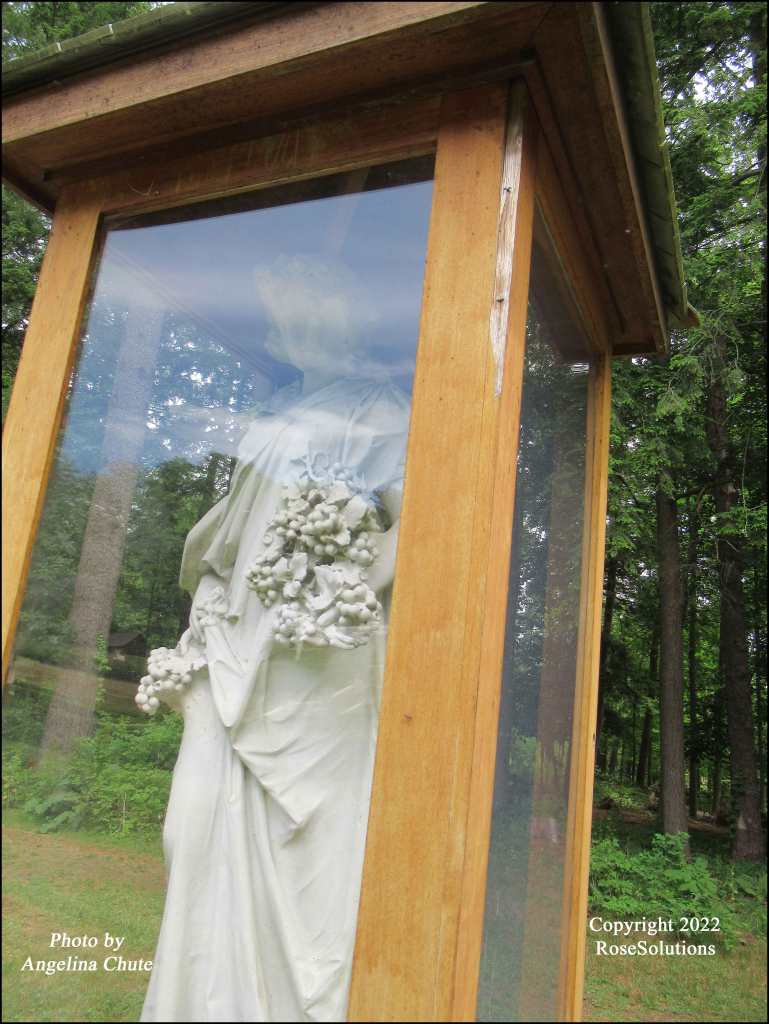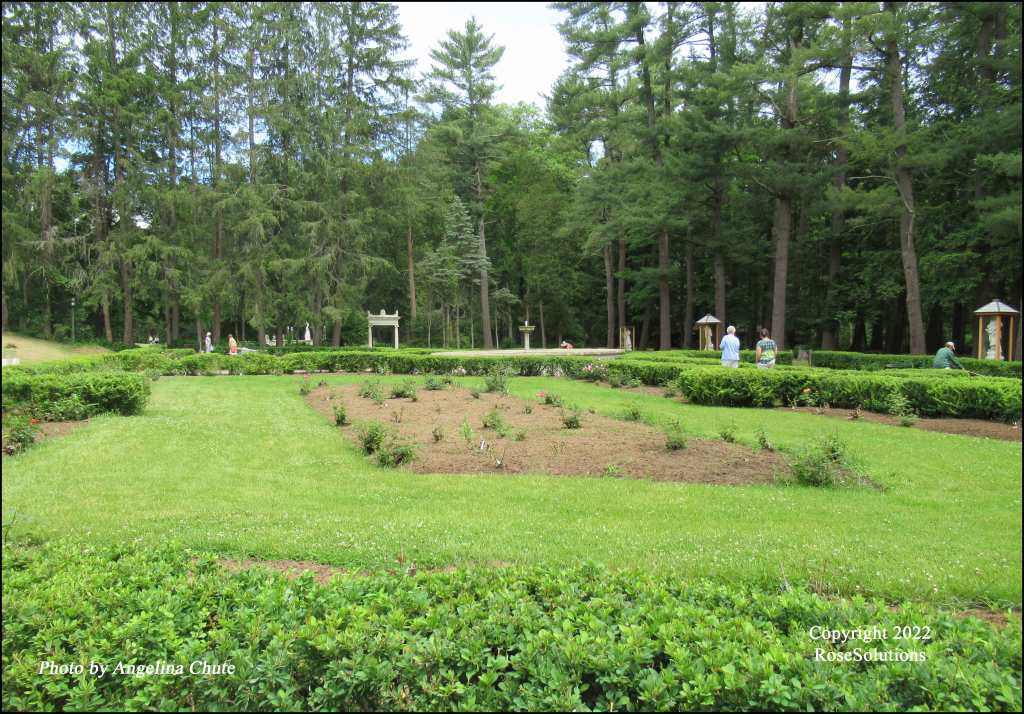
When visiting Saratoga Springs, NY this summer, one of the stops on our itinerary was the Yaddo Rose Garden. Hidden down a long winding road, the rose garden is located on part of the 400 acre working artists’ retreat. The only part of the estate open to the public are the gardens which include the rose garden and the rock garden.
On the day we visited the garden, during the second week of June, we were fortunate to meet several of the volunteers who maintain the garden. Due to Covid, the garden had been shut down in 2020 and only limited access was allowed in 2021. To say the least, there was a lot of work to be done when they returned. The volunteers had overgrown beds to weed and replacement roses to plant. They also have a continuous deer problem to deal with.
We learned some of the history of the garden from the volunteers we met and it is quite a story. The gardens at Yaddo, a gift by Spencer Trask to his wife Katherine in 1899, were designed by the couple with some input from landscape architects. The designs were also influenced from the gardens the Trasks had visited on their trips abroad.

The rose garden dates back to 1905. Unfortunately, after the deaths of their four children, the Trasks were left with no heirs and formed what became The Corporation of Yaddo which they endowed to manage the property as an artist’s retreat. With the death of Katrina in 1922, the corporation established a residency program for artists from all backgrounds and various countries. It has attracted well known artists over its many years such as Saul Bellow, James Baldwin, Katherine Anne Porter and Leonard Bernstein.

The rose garden’s original design remains. It has four beds that surround a fountain with a long pergola that overlooks the garden from a terrace. Roses reflect the original color scheme of red, pink, white and yellow hybrid teas and floribundas. While our visit was about 10 days too early for their June bloom, which comes in the later part of June in Saratoga Springs, we were, however, able to enjoy the display of the prolific climbing roses. They were in full bloom and scrambling up and over a huge pergola. West of the pergola is the woodland Rock Garden.

On one side of the rose garden stand Italian marble statues representing the four seasons. These statues are protected in the off-season by elaborate structures that had not yet been removed when we were there. However, as you can see from the photograph, the enclosures were made with a plexiglass-like material which allows visitors to still admire the sculptures.
Although Mrs. Trask’s intention was to share the gardens with the public, like many public gardens, they fell into disrepair. Luckily, it was rescued by Saratoga Springs resident Jane Wait in 1991 who gathered 17 volunteers and raised money to replace roses, install water lines and reconstruct the pergola. Today there are over 50 volunteers making up the Yaddo Garden Association and they not only plant, prune, and select roses, but are in charge of all aspects of maintaining and preserving the rose garden, its marble statues and the additional rock garden as well.
Thanks to the enormous effort by these volunteers, the Gardens at Yaddo are restored, well-maintained, and still able to be enjoyed by the public.



Absolute inspiration to we New England forest gardeners! Early season or no – a very lovely rose garden. Thank you for sharing this story.
Angie & Mike,
Enjoyed the article. Love to hear about people restoring rose gardens.
I have always wanted to visit Saratoga for horse racing. Now I know the area also has a rose garden to visit.
Thank you for introducing me to this garden. I’m left with a couple questions and hope you can answer. I’m sure many rose growers and enthusiasts could benefit too. When replacement roses become necessary, what methods do you recommend when actually putting a new rose where one once grew. I’m quite familiar that doing so is rather tricky, as rose sickness can overcome the new replacement.
What do you do to avoid this from happening? I currently am relying on enlargement of the planting hole, removal of as much of the soil that had been in contact with the deceased rose as possible. Then adding new rose, different soil – often provided from another area where roses haven’t grown, added with fresh soil & amendments.
What do you do? Or in this case, what did the volunteers at Yaddo undertake?
Thank you again,
-Kathryn
Kate
The Yaddo volunteers replanted many new bare-root roses in the same beds, not necessarily the same holes.
We also have experienced Rose Replant Disease and did everything you are doing with mixed results. Replanting roses from one hole to another in the fall worked better than a new rose in an old hole in the spring.
My new strategy is to plant in a space that had been between previous rose plantings creating a “new” hole in an effort to trick Mother Nature. I’ll let you know.